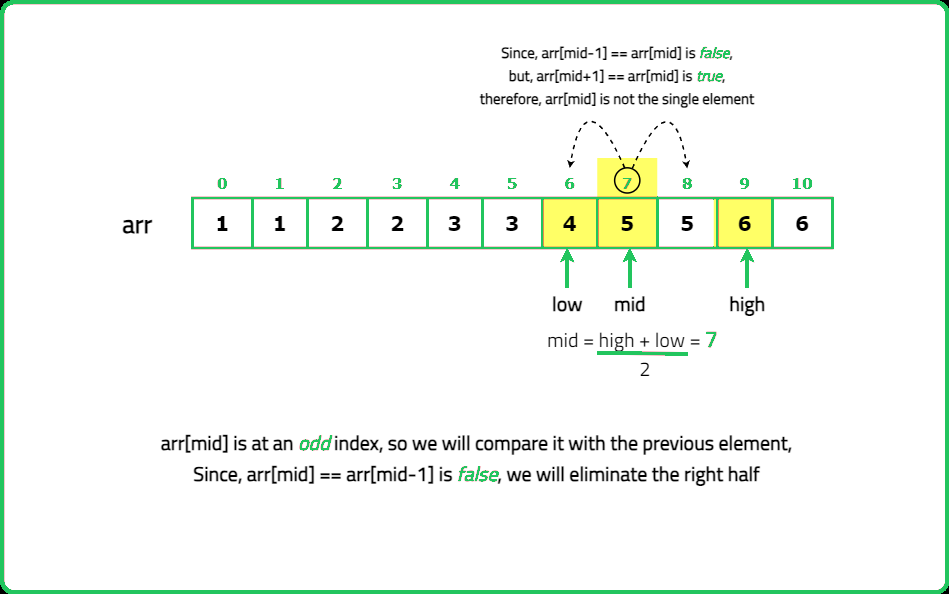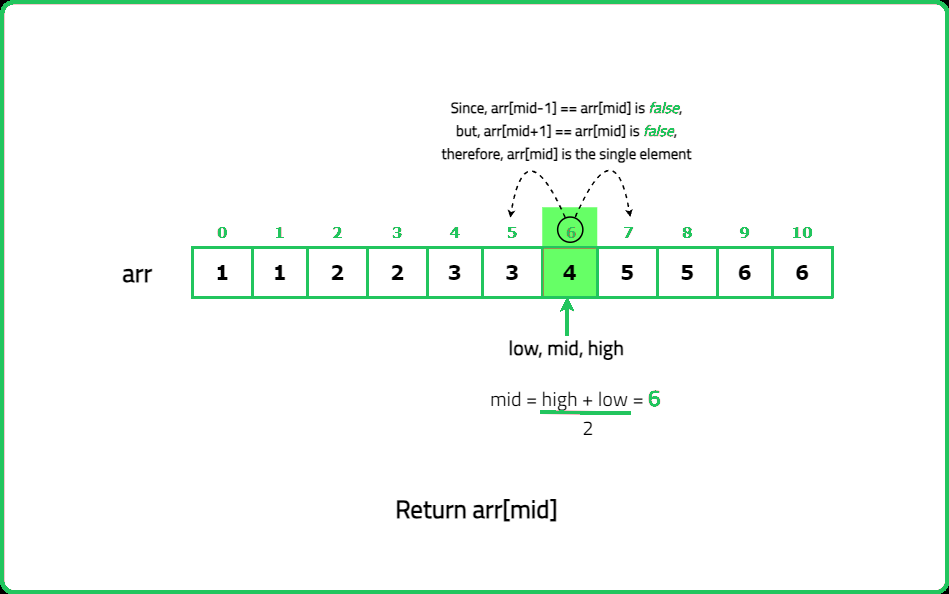Single element in sorted array
Binary Search
Logic Building
Medium
Given an array nums sorted in non-decreasing order. Every number in the array except one appears twice. Find the single number in the array.
Examples:
Input :nums = [1, 1, 2, 2, 3, 3, 4, 5, 5, 6, 6]
Output:4
Explanation: Only the number 4 appears once in the array.
Input : nums = [1, 1, 3, 5, 5]
Output:3
Explanation: Only the number 3 appears once in the array.
Input :nums = [1, 1, 2, 2, 3, 3, 4, 4, 5, 5, 6, 6, 7]
Constraints
- n == nums.length
- 1 <= n <= 104
- -104 <= nums[i] <= 104
Hints
- The array is sorted, which means duplicate numbers will appear consecutively. The single number will break this pattern of consecutive duplicates. Use this property to identify the single number efficiently.
- "Perform a binary search to locate the single number. At each step, check the pairing pattern: If nums[mid] == nums[mid + 1], the single number lies in the unsorted half beyond this pair. Otherwise, if nums[mid] == nums[mid - 1], the single number lies before this pair."
Company Tags
McKinsey & Company
GE Healthcare
Roche
Bain & Company
Visa
OYO Rooms
Intel
Alibaba
Electronic Arts
HCL Technologies
Morgan Stanley
Rockstar Games
Bungie
Snowflake
Zoho
Twilio
Uber
Walmart
Salesforce
ARM
Dropbox
Flipkart
Broadcom
Zomato
Ubisoft
TCS
Cognizant
Accenture
Infosys
Capgemini
Wipro



